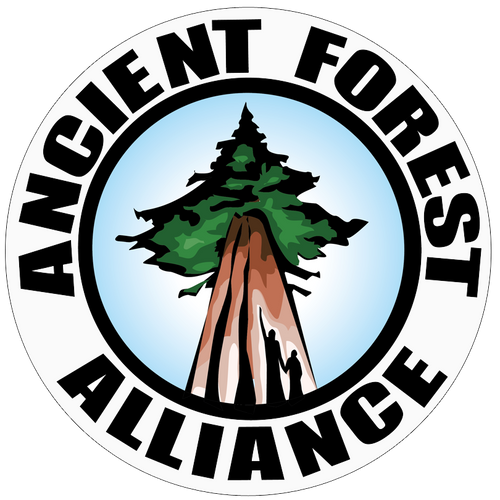
At-Risk & Restored Plants in BC: What Foragers Should Protect- And Which Ones Are NEVER For Picking).
Share
At-Risk & Restored Plants in BC: What Foragers Should Protect
Foraging in British Columbia is a privilege that comes with ecological responsibility. While some wild plants are abundant, others are at-risk due to overharvesting, habitat loss, or slow reproduction. Meanwhile, conservation efforts are helping restore culturally and ecologically vital species, like camas, that were once nearly lost.
This guide highlights:
✔ At-risk plants to avoid foraging
✔ Success stories of species being restored
✔ How to ethically harvest alternatives
At-Risk Plants: Do Not Harvest
1. Western Trillium (Trillium ovatum)
- Status: Sensitive
- Threats: Slow-growing (takes 7+ years to flower), often picked for ornamental use.
- Sustainable Alternative: Plant nursery-grown trilliums in shade gardens.
2. Wild Ginger (Asarum caudatum)
- Status: At-risk in some regions
- Threats: Roots harvested for tea—kills the plant.
- Sustainable Alternative: Use store-bought ginger or grow your own.
3. Phantom Orchid (Cephalanthera austiniae)
- Status: Rare
- Threats: Cannot photosynthesize—relies entirely on fungi. Picking = death.
- Sustainable Alternative: Photograph, never pick.
4. Tall Blue Lettuce (Lactuca biennis)
- Status: Rare in BC
- Threats: Mistaken for edible wild lettuce.
- Sustainable Alternative: Harvest sow thistle or dandelion greens instead.
Restoration Success Stories
Thanks to Indigenous-led conservation and rewilding efforts, some culturally vital plants are making a comeback.
**1. Great Camas (Camassia leichtlinii)
- Why it was lost: Colonial agriculture destroyed camas meadows, a staple Indigenous food source.
- Restoration efforts:
- First Nations partnerships (e.g., WSÁNEĆ, Kwetlal) are replanting camas bulbs.
- Controlled burns mimic traditional land stewardship, boosting growth.
- How foragers can help:
- Never harvest wild camas unless part of a sanctioned Indigenous-led harvest.
- Support native camas meadow restoration projects.
2. Yellow Montane Violet (Viola praemorsa)
- Why it was lost: Habitat loss in Garry Oak ecosystems.
- Restoration efforts:
- Reseeding programs by groups like the Garry Oak Ecosystems Recovery Team.
- How foragers can help:
- Avoid picking violets in rare ecosystems (e.g., southeastern Vancouver Island).
3. Beargrass (Xerophyllum tenax)
- Why it was declining: Overharvesting for floral industry.
- Restoration efforts:
- Ethical harvesting agreements with Indigenous basket-weavers.
- How foragers can help:
- Never cut beargrass—it takes 5–10 years to flower after cutting.
How to Forage Responsibly
✅ Follow the 1-in-20 rule (take 1 plant, leave 20).
✅ Never dig roots of at-risk species.
✅ Learn Indigenous harvesting protocols (many plants require cultural practices to thrive).
✅ Never take more than you will use. Respect is paramount, in all ways.
Support Conservation Efforts
- Volunteer with Habitat Acquisition Trust (restores Garry Oak ecosystems).
- Donate to Indigenous-led land stewardship programs.
- Attend workshops on reciprocal foraging (e.g., replanting as you harvest).
Here are more fragile native alpine and subalpine wildflowers in Canada that are especially vulnerable to picking, trampling, or bulb disturbance this time of year (late spring/early summer). Many grow in popular hiking areas and are at risk due to their slow growth, rare habitats, or attractive blooms.
1. Alpine Forget-Me-Not (Eritrichium nanum)
- Why at risk? Tiny, sky-blue flowers make them irresistible to pick, but they grow in sparse, rocky alpine zones with poor soil recovery.
- Threat: Uprooting kills the plant—it cannot regrow from fragments.
- Where found: Rocky Mountains (Banff, Jasper), high-elevation scree slopes.
2. Western Pasqueflower (Pulsatilla occidentalis)
- Why at risk? Fuzzy, purple blooms appear early in alpine meadows, making them a target for picking.
- Threat: Deep taproot is easily damaged; plants take years to mature.
- Where found: BC and Alberta alpine zones (e.g., Manning Park, Sunshine Meadows).
3. Glacier Lily (Erythronium grandiflorum)
- Why at risk? Bright yellow flowers are edible (bulbs were traditionally harvested by Indigenous peoples), but overharvesting by foragers depletes colonies.
- Threat: Bulbs take 5–7 years to store enough energy to flower.
- Where found: Subalpine meadows (e.g., Whistler, Mount Robson).
4. Mountain Avens (Dryas octopetala)
- Why at risk? Delicate white blooms and evergreen leaves are prized by gardeners; trampling compact their fragile tundra soil.
- Threat: Slow-growing, relies on specific mycorrhizal fungi.
- Where found: Arctic-alpine zones (e.g., Tombstone Territorial Park, Yukon).
5. Fairy Slipper Orchid (Calypso bulbosa)
- Why at risk? Pink-purple orchid is often picked or dug up for its showy bloom.
- Threat: Depends on specific fungi—transplanting kills it.
- Where found: Moist subalpine forests (e.g., Vancouver Island, Rockies).
6. White Mountain Heather (Cassiope mertensiana)
- Why at risk? Bell-shaped flowers are picked for bouquets, but it grows only in fragile alpine heath ecosystems.
- Threat: Trampling destroys its shallow root mat.
- Where found: High-elevation zones (e.g., Garibaldi Park).
7. Yellow Columbine (Aquilegia flavescens)
- Why at risk? Unique spurred flowers attract photographers and pickers.
- Threat: Rare in Canada (limited to a few alpine sites in BC/Alberta).
- Where found: Scattered in Rockies’ limestone areas.
Why These Species Are Especially Vulnerable
- Short growing seasons: Alpine plants have only a few weeks to flower and seed.
- Shallow roots/bulbs: Disturbance kills them (unlike hardy weeds like dandelions).
- Misidentification: Foragers may confuse them with edible/abundant species.
How to Protect Them
✔ Stay on trails—alpine soils erode fast.
✔ Photograph, don’t pick—even touching can damage pollinators’ access.
✔ Never dig bulbs—most alpine species cannot be transplanted.

